You are here
Botanical Garden in Dushanbe.

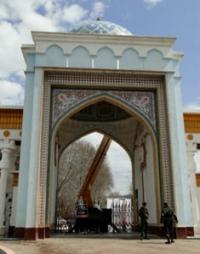
Excursions to Botanical Garden in Dushanbe.
"And young gardens are now growing where they were unthinkable even in recent years, where the population once suffered from vitamin deficiency and scurvy. The Botanical Garden is now working with the forestry department to address the problems of afforestation, so crucial for the Pamirs; it turns out that hundreds of kilometers of narrow riverbanks can be planted with forest tree species. I've seen such young trees already planted along the banks of the Shah-Dara River by collective farmers, who now believe every word of the scientists. Among the collective farm gardeners of Badakhshan, enthusiasts have emerged who are deeply studying Michurin's science. Their gardens - in Ishkashim and Vanch - are becoming strongholds of the Botanical Garden in these regions. Gardening teams from many Pamir collective farms are organizing the cultivation of elite plants. All gardeners in Badakhshan now have a reputable scientific center - the Pamir Botanical Garden."
"Travels in Pamirs." Pavel Luknitsky. 1955.
Visit to Botanical Garden in Dushanbe.
The Botanical Garden of the Academy of Sciences of Tajikistan (Gods "Iram") is located in the northern part of the left bank of the Varzob River, in the square of Karimov, Said Nosirov streets, Rudaki and Hafiz Sherozi avenues.
The area of the garden reaches 40 hectares. The main entrance to the garden is in the eastern part. The alley leads to a glass greenhouse, from where the alleys and paths of the botanical garden originate. The glass (cone-shaped) greenhouse is located at the end of the central alley of the garden.
The territory of the Institute of Botany of the Academy of Sciences of the Republic of Tatarstan is located in the northern part of the Botanical Garden. The botanical garden was created in Dushanbe in the middle of 1933 by Professor Fedchenko B.A. heading during this period, the sector of botany of the Tajik base of the Academy of Sciences of the USSR (since 1951, the Academy of Sciences of the Republic of Tatarstan) on an area of 34 hectares.
At the entrance to the garden grow samples of trees planted by the first employees of the Institute of Botany in the mid-1930s. After the formation of the Academy of Sciences of the Tajik SSR (1951), greenhouses were built on the territory of the garden in the 1960s for the Institute of Botany of the Academy of Sciences of the Tajik SSR.
The botanical garden contains samples of trees and shrubs from almost all over the world, many of which have already entered the Red Book of Nature.
In the Botanical Garden in Dushanbe, at first, all the plants were distributed according to the conditional zones of the garden:
- area of dendroflora of Europe and Siberia (3 ha and 226 plant species)
- East Asian dendroflora area (7 hectares and 837 plant species)
- plot of dendroflora of the Mediterranean (with an area of 10 hectares and 639 plant species)
- site of dendroflora of North America (area of 5.3 ha and 488 plant species)
- a plot of dendroflora of Central Asia (area 5.4 ha).
On the territory of the Botanical Garden in Dushanbe, there is an institute of botany, physiology and genetics of plants, a herbarium of the institute of botany, and a center for innovative biology and medicine. Within the institute there are several scientific laboratories:
- photosynthesis and plant productivity,
- molecular biology and biotechnology,
- plant genetics,
- biomedicine.
The development of the Botanical Garden after 1959 was carried out strictly according to the General Plan for the construction and reconstruction of the garden, in the development of which Ryabova T.I., Koroleva A.S., Temberg Ya.G. and other employees of the garden took part.
Work on the implementation of the General Plan began in the 60s. By this time, the connections of the garden with many botanical gardens of foreign countries had significantly expanded, there was a massive attraction of woody and herbaceous plants of the local flora, and collection plots were created. In 1962, A. S. Koroleva summed up the results of the introduction of woody plants over 25 years.
The paper provides a brief description of 737 species belonging to 262 genera and 78 families. The value of this work has not been lost to this day. Currently, the Dedrarium occupies 28 hectares, including 25.3 hectares under the exposition of dendrofloras of East Asia, North America, Central Asia, the Mediterranean, and a section of Europe and Siberia.
There is also a sirengaria rose garden, a pilot production nursery, greenhouses and a hothouse complex. 1765 species of tree species grow in 5 botanical and geographical areas of the garden, including 188 species in Europe and Siberia (5.4 ha), 303 species in the Mediterranean (4.6 ha), and 144 species in Central Asia (5.4 ha). species, North America (5.3 ha) 363 species, East Asia (7 ha) 767 species. Of the more than 500 species of conifers, 141 species currently grow in the garden, of of which about 25 turned out to be promising for planting greenery in cities and towns of Tajikistan.
The Botanical Garden for 72 years of its existence has carried out extensive work on the study, breeding and protection of plants in order to enrich the plant resources of the Republic. More than 8,000 species, forms and varieties from various floristic regions, including more than 2,300 species of trees and shrubs, more than 600 varieties of roses, 120 varieties of lilacs, more than 2,700 species of tropical and subtropical plants, about 70 species of aquatic plants, over 1,000 species of , forms and varieties of ornamental herbaceous plants.
The garden constantly provides new highly ornamental plants for green building, both for open ground and for creating winter gardens and interior design. The work of the garden shows the high prospects for the use of coniferous plants in green building, which have taken a worthy place in the landscaping assortment of cities and towns in Tajikistan: virgin juniper, giant sequoia, Arizona and evergreen cypress, Crimean and Calabrian pine, Atlas cedar, etc.
Particular attention in the research of garden employees is given to local flowering herbaceous plants. The original and rich flora of Tajikistan has always attracted the attention of researchers from near and far abroad.
Even at the end of the last century, amazingly beautiful species of tulips, irises, anemones, crocuses, onions, and eremurus were exported from Tajikistan. It is known that tulips once exported from Tajikistan were used by Dutch breeders to create many varieties of tulips.
The results of many years of research by the employees of the garden were published in numerous articles, such large collective monographs as "Greening the cities and towns of Tajikistan" (1953), "Floriculture in the cities and towns of Tajikistan" (1965), "Trees and shrubs for landscaping Tajikistan" (1965), "Tables for the design of green spaces in Tajikistan" (1978) and "Plants for ornamental horticulture in Tajikistan" (1986).
The latter work describes 587 species of trees, shrubs and flowering plants that turned out to be the most ornamental, sustainable and the most promising for landscaping cities and industrial centers of Tajikistan, including among tree species 387, herbaceous flower plants 117 species, forms and varieties, greenhouse 56, for reservoirs 27 species.
The planning and organizational feature of the garden is an overview of the various parts of the arboretum. Most route excursion roads start from a large parterre from the central reservoirs and end in the same place where you can leave through the main entrance.
Many years of experience in the activities of the Botanical Garden is used to develop the scientific basis for the creation of plantings of a garden-practical type, taking into account the specifics of the arid climate of Tajikistan.
Of no small importance is the educational activities of the garden, aimed at educating the population of a caring attitude towards the plant gene pool of the Republic and explains the role of green spaces in improving the ecological situation of the environment.
The garden is visited by thousands of Dushanbe residents. He meets them with a flowering carpet of herbs of natural flora, extraordinary beauty, air filled with the scent of flowers and silence, broken only by the singing of birds and the quiet whisper of plants.
The Central Botanical Garden has gone through a difficult time - the end of the eighties and the beginning of the nineties - the recession of the economy, the political crisis, the civil war. As a result, there was a massive outflow of qualified specialists, scientific research was curtailed, almost the entire collection of tropical plants was frozen, and the species composition of the arboretum was greatly reduced. All this is in the past.
The positive changes taking place in Tajikistan in recent years create the conditions for making the Botanical Garden meet the standards. In 2007, an ethnographic reserve of folk architecture (in the open air) began to be created on the northern side of the greenhouse.
Here were built traditional houses of residents of various parts of Tajikistan and industrial buildings (aloukhona, mekhmonkhona, baths, dairy, mills, etc.). On the eve of the 20th anniversary of the independence of the Republic of Tajikistan (2010 - 2011), according to a new project, new wooden decorative aivans (arbors) inlaid with oriental ornaments were brought to the territory of the garden and erected.
Sculptures of animals and benches for visitors were installed near a dozen aivans. Along one of the central alleys of the garden, various sports simulators were installed, which have become a favorite place for improving the health of residents of the capital of Tajikistan.
The main entrance was decorated with an Arch with a blue dome in the center in the style of national architecture, which has become the hallmark of the garden. One of the sections of the garden is reserved for the "town of crafts" and the traditional national interior of the inhabitants of the regions of Tajikistan, where dwellings are located, home cooking - tandoors for baking cakes and sambuses, samples of household utensils, etc.
A summer amphitheater was built in the garden with a number of seats for 1.5 thousand people, there is an artificial pond and a corner of exotic peacocks for visitors By the decision of the City Hall (Khukumat of the city) of Dushanbe, Botanical Garden of the Academy of Sciences RT was renamed Bogi "Iram".
Gods "Iram" has turned into a park of culture and recreation for citizens, here are mainly mass cultural events of the city. On weekends there are exhibitions of handicrafts, artists and local firms. It has also become a tradition to come from any part of the city here, on the most important day, to the wedding.
The newlyweds, together with their relatives, come here to take high-quality photographs, which will later be kept by them as a part of the wedding.
Geographic coordinates of Botanical garden in Dushanbe: N38°36'13.46" E68°46'51.85"
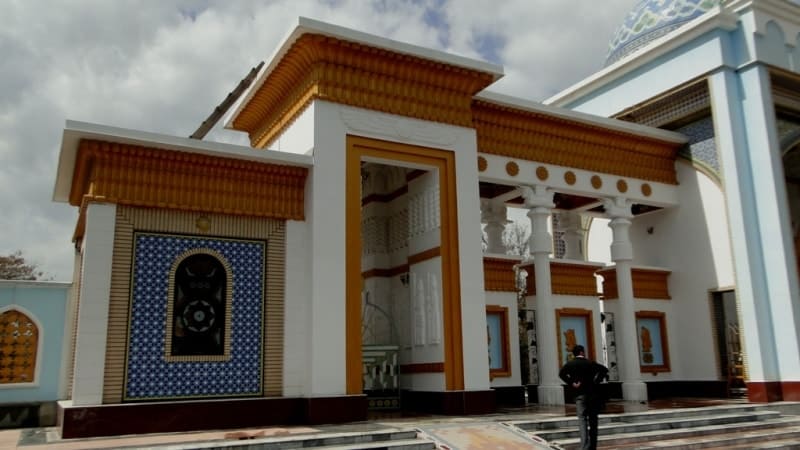
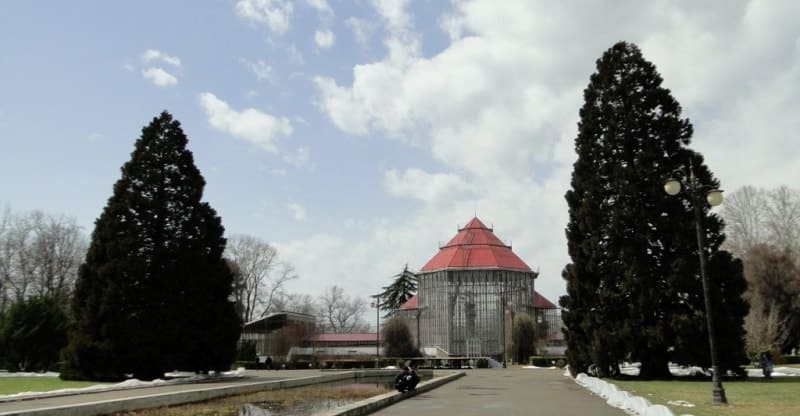



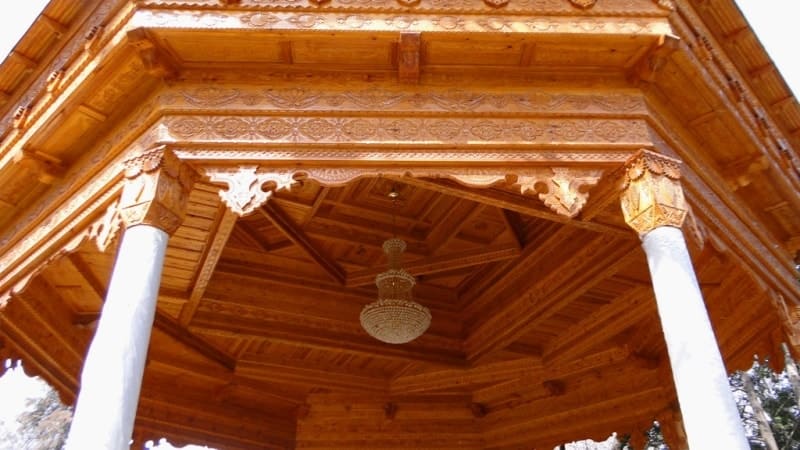


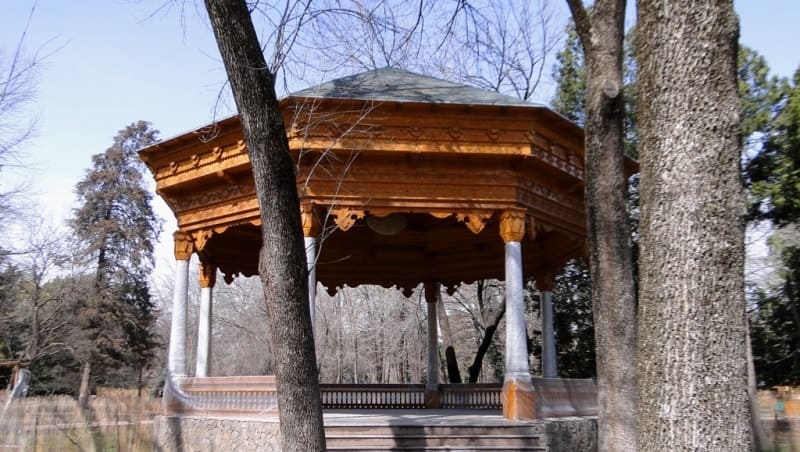



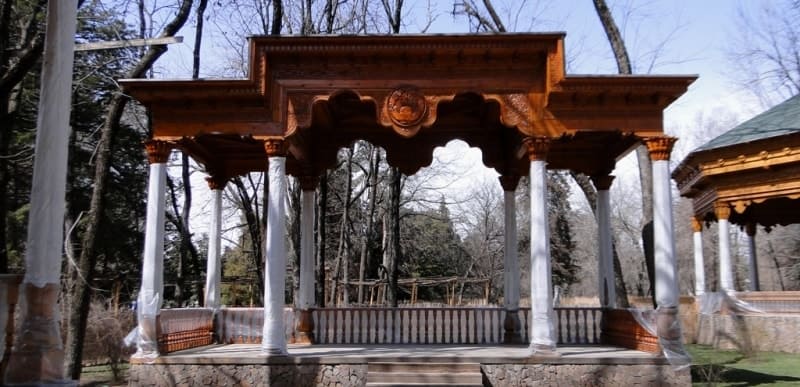
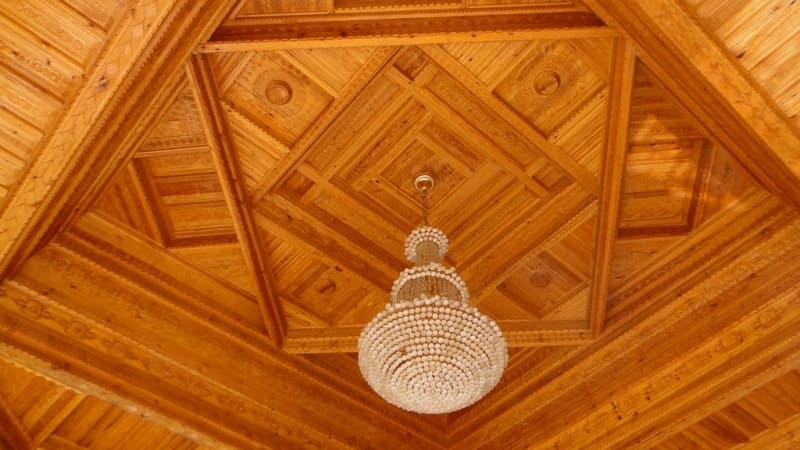
Authority:
http://www.bogibotaniki.tj
Photos by
Aexander Petrov.







